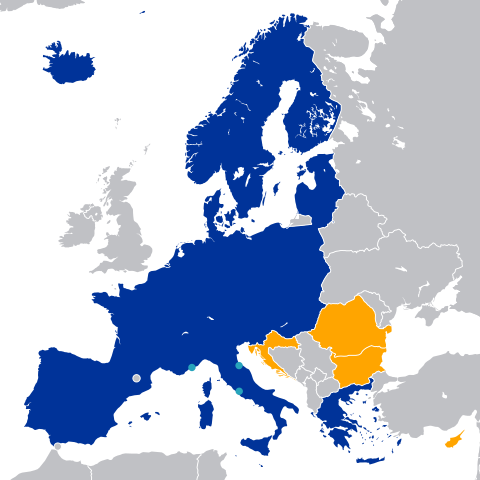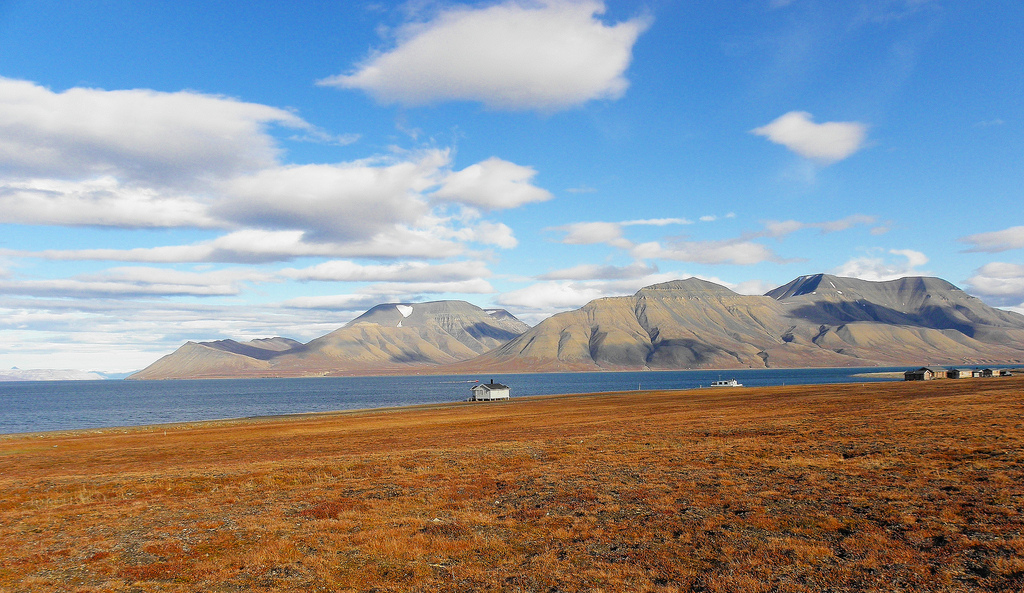I’ve been getting some questions about how we managed to stay in Europe for the last year. Here are a few things to keep in mind when planning your European trip if you only have a 90-day Schengen visa:
1. Not all of Europe is in the Schengen region.
More specifically, the UK is not a part of the Schengen agreement. Though that may seem less odd now that Brexit has happened, the UK's not taking a part in the Schengen agreement predates the current ongoing discussion about the relationship between the UK and the EU. Additionally, the UK allows for visa-free entry for up to 6 months out of a year for residents in the US, Canada, Australia, much of Latin America, Japan, South Korea, and a handful of other countries. You can check out the list here.
This is a boon for nomads: we've found the UK to be fairly nomad friendly, as well as queer-friendly for the queer digital nomads out there. In addition, with England, Wales, Northern Island, and Scotland making up the UK, you can wander around 4 different countries while you're there, if you so choose.
However, keep in mind that the UK is notoriously extremely serious about their immigration policy. Make sure that you don't overstay your 6 months by even a day. We've also heard that if you're going in and out of the UK on the 6 month visa, that you run the risk of not being let back in if you are nearing the end of your 6 month period. All in all, though, if you plan out your stay well (and you have a passport from an English-speaking country or a few others), you can spend 90 days in mainland Europe, 180 days in the UK, and then pop back to mainland Europe. This would bring you up to 12 months in Europe, without any sort of special visas!
As you can see in this map of the Schengen region (Source), not all of Europe is in the Schengen region. Dark blue = the Schengen area, orange = EU members that are obliged to join the area, light blue = countries with open borders.

2. Ireland is also not a part of the Schengen agreement
Yup! You can not only spend time in the UK, but also be in the EU (as Ireland is), but not overstay your Schengen visa. We were a bit surprised by this last year, as we flew into the UK through Ireland, and then went through customs in Ireland, but not in the UK. This is another good alternative, particularly for folks in tech, given the strong tech community in Ireland. In fact, you can even combine your Ireland stay with a UK stay: the UK and Ireland are part of the Common Travel Area, and there is an open border between Northern Ireland and Ireland. However, the countries that can travel to Ireland visa-free differ slightly from those that can travel to the UK visa-free: you can read more about the requirements here. Additionally, the limit for visa-free travel for these countries is 90 days, as opposed to the UK's 180 days.
3. The Schengen visa count keeps ticking even if you aren't in Europe
Unfortunately, you aren't limited to physically being in the Schengen region for 90 out of 180 days. If you first fly into Paris on day 1, then take a flight to the US 5 days later, and stay in the US for 85 days, upon flying back to Paris, you would only have 4 days left to stay in Schengen region. The 90-day clock does not reset itself, even if you are leaving the Schengen region during that period of time.
Therefore, make sure that you time your trips well. It is true that we have noticed that the authorities in some countries (cough cough Spain) don't give your passport a second glance, and just stamp it as you arrive and leave. However, if you don't want to overstay your visa, and particularly if you are flying in or out through one of the countries that are known for being stronger sticklers for rules, make sure that you are starting your 90-day count from the first day that you set foot in the Schengen region.
4. Some territories are in Schengen
For some time, we were really intent on picking some small, sunny territory belonging to one of the EU member states and camping out there until our Schengen visa reset itself. Unfortunately, Madeira, the Canary Islands, and the Azores, are all a part of Schengen.
Somewhat surprisingly, the Netherland Antilles (in the Caribbean!) -- Bonaire, Curaçao, and Aruba -- are a part of Schengen! So it is possible to overstay a Schengen visa, even while being 6000+ kilometres away from Europe.
5. While other territories are not!
On the other hand, Svalbard -- a lovely Norwegian archipelago within the arctic circle -- is not a part of Schengen! Apparently it's hard to get to without going through the Schengen region, though it is possible to do some sort of flight through Russia. However, if you time it right, it would be possible to stay in this former mining town (pop. 2,642). If you know of any digital nomads who have wandered through Svalbard, please let us know!

Perhaps a bit more realistically, Greenland is not a part of the Schengen region. If the Greenland weather isn't quite your cup of tea, perhaps you want to visit Gibraltar! Located on the Southern tip of Spain, this little territory is theoretically a part of the UK, and thus doesn't follow the Schengen agreement. With an average annual temperature of 22 °C, this country is definitely at the top of our list for those who want to do a bit of Schengen-avoiding border hopping.
6. Consider the Balkans
The Balkan states consist of a set of countries on the Balkan peninsula, between the Mediterranean and the Black Sea. Of course, each Balkan country has a slightly different relationship with the rest of Europe and the Schengen region. Here's an overview of each of those:
- Greece, on the tip of the Balkan peninsula, is traditionally not considered a Balkan nation, and is a part of both the EU and the Schengen region.
- Cyprus and Slovenia are a part of the EU and the Schengen region.
- Bulgaria, Romania, and Croatia are within the EU, but not within the Schengen region.
- Albania, Bosnia and Herzegovinia, Kosovo, Macedonia, Montenegro, Serbia, and Turkey are neither within the EU nor within the Schengen region.
Source: this handy Euler chart.
So feel free to visit one of the countries that is outside of the Schengen region in order to reset your count. However, the Balkans are of course geographically further away from Western Europe, which could present some logistical difficulties if that is the main area in the Schengen region that you are based out of. We, personally, haven't done extensive travel in the region. Jones spent some months living and working in Turkey, but that was a few years back, before the current political situation in the area. We have stayed away from the region since discussions with other folks who have traveled in the region seem to indicate that we could encounter some problems being an out queer couple in some of the Balkans, particularly given that we are sometimes read as a lesbian couple and that I tend to get harrassed for sometimes being read as female and sometimes read as male. This could be a good option though for queer folks traveling alone, particularly cis-male guys.
7. Countries that are not strictly in Schengen, but probably aren't going to help you with your nomad travel plans
There's a few countries that have a somewhat complex relationship with the Schengen region that we haven't covered so far. Vatican City and San Marino in theory are not a part of the Schengen region and manages their own visa policy. However, since they are land-locked by Italy, they defacto function as part of the Schengen region. There isn't any border control for entering Vatican City and San Marino, so you wouldn't get the appropriate stamp that would indicate that you hadn't overstayed your Schengen visa, even if you did manage to spend 90 days in the Vatican or San Marino.
On the other hand, Andorra isn't part of the Schengen agreement, and retains its own border controls, though they do accept Schengen visas for entry. It's unclear to us whether a nomad would experience trouble waiting out the reset of their 90-day period while in Andorra, and we haven't tried it yet ourselves. Monaco seems to be under a similar gray area as well. They have border control for entering by helicopter or by sea, so perhaps if you exited Schengen by sea and tried to go into the port of one of these two countries, you'd get the right stamps in your passport. Who knows! Let us know if you hear of anyone who has tried one of these options.
So there you have it! Not all of Europe is a part of the Schengen agreement, and if you plan your trip carefully, you should be able to stay there for a full calendar year as a digital nomad, without having to hop to America, Asia, or Africa in the interim. We enjoyed doing this last year, having spent our year in Berlin, Barcelona, Edinburgh, Sevilla, and Barcelona again. Though we had the help of a 3-month work visa in Germany that let us extend our Schengen visa by a month and a half, it definitely is possible to stay in the area comfortably for 9 months by popping out to the UK, and for 12 months with a little more creative planning and border hopping.
Note: Image used on title page is a beautiful shot of the Isle of Skye, in Scotland. Image used under CC-BY-2.0, copyrights Moyan Brenn, source.
